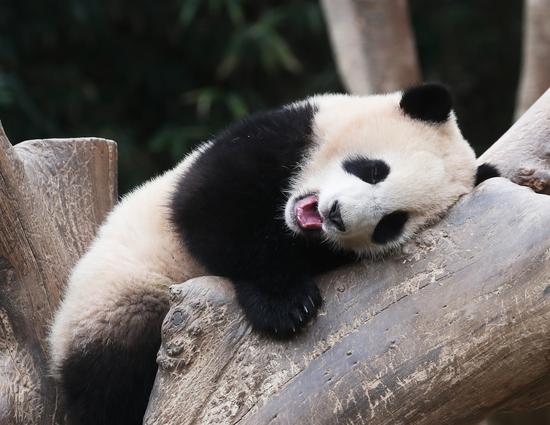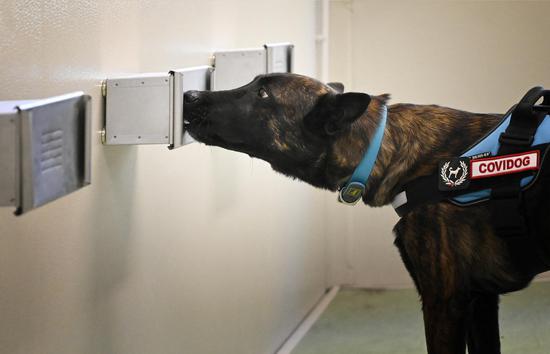
A breeder checks his animals at a pig farm in Chongqing. [Photo/Xinhua]
Possible solutions
According to the latest national animal and poultry genetic resources list published last year, China is now home to 83 breeds of pig.
The nation used to have more breeds, but many have become extinct and 25 species are now endangered.
Liu Yonghao, chairman of New Hope Group, one of the country's biggest pork breeders, said problems being experienced include an incomplete industrial chain, outdated technology and the threat of disease.
Experts and company heads have suggested that China needs to grasp the core technologies required for breeding pigs and strengthen the development of animals bred locally, reducing reliance on imports.
Wu Zhenfang, director of the National Engineering Research Center for Breeding Swine Industry, said local pig breeds should be protected regardless of whether they are popular on the market, as each breed has its own advantages.
South Village Paper, owned by Nanfang Daily Media Group in Guangzhou, capital of Guangdong province, quoted Wu, who is also a professor of animal science specializing in molecular genetics and breeding at South China Agricultural University, as saying that regional pig breeds should be protected for their biological diversity and genetic resources.
"Pork from many local breeds tastes better, which can be a selling point. Domestic companies should farm more local pigs by using hybridization techniques to produce a higher percentage of lean meat," he said.
"Local pork should be developed in an attempt to gain increased market share and meet growing demand."
Although China has imported more breeding pigs in recent years, this has not always been the case.
Wu said an average of about 6,000 such animals were imported each year from 2015 to 2018 before African swine fever emerged in the country. He added that this figure was not that high, considering that the country slaughtered 600 million pigs annually.
"In recent years, many Chinese pig farming companies have increased imports of breeding animals for several reasons," he said.
"They are seeking to improve local breeds by introducing new foreign ones, which can enrich genetic diversity. At the same time, they can promote their brands by stating that the pork comes from high-quality foreign pigs. This is a good marketing strategy."
As pig prices soared, new breeding companies and those that developed too quickly faced a shortage of animals, and the quickest way to obtain high-quality pigs for reproduction purposes was to buy from the home and overseas markets, Wu said.
Domestic pig breeding companies need to be aware that there is a gap between themselves and their foreign counterparts regarding the level of technology being used, Wu added.
"In European countries and the US, pig farming has a mature industrial chain. Upstream companies are responsible for technology research and development to cultivate high-quality breeds. Downstream companies, which focus on pig reproduction, must pay a fee to those upstream when they need pigs for breeding," he said.
Chinese pig farming companies are mainly involved in breed selection and reproduction, but lack incentive to cultivate new breeds, according to Wu.
He suggested that the government increase investment in pig breeding technology to encourage innovation among companies.


















































